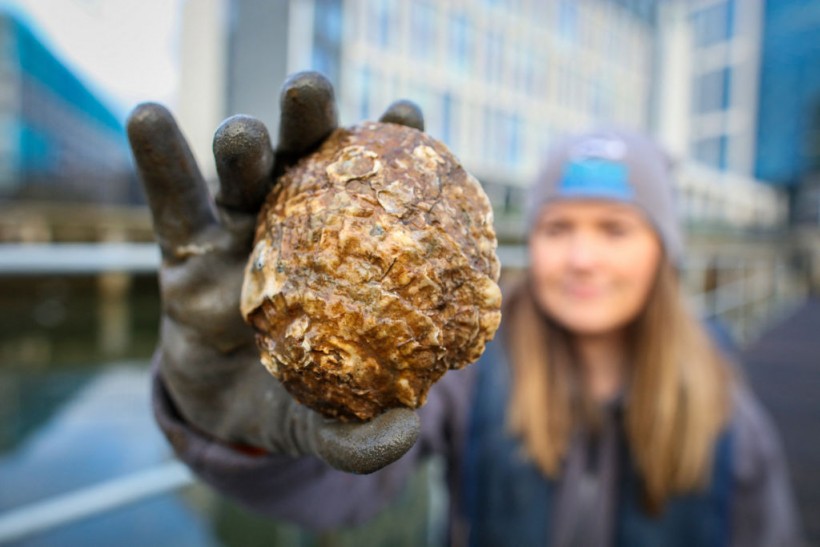Imagine finding a rare treasure that was thought to be lost for over a century.
That's what happened to a researcher who received a WhatsApp photo of a native oyster, a species that had disappeared from Belfast Lough, a sea inlet in Northern Ireland, since 1903.
A century of absence
 (Photo : PAUL FAITH/AFP via Getty Images)
(Photo : PAUL FAITH/AFP via Getty Images)

The European flat oyster, or Ostrea edulis, is a native species that once thrived in the waters of Belfast Lough, a sea inlet in Northern Ireland.
The oyster was a valuable source of food and income for the local people, as well as a key component of the marine ecosystem.
Oysters filter seawater and provide habitats for many other organisms, such as worms, snails, algae, and anemones.
However, the oyster population in Belfast Lough was decimated by overfishing, pollution, and disease in the late 1800s and early 1900s.
The last recorded catch of oysters in the lough was in 1903, and since then, the species was considered locally extinct.
Numerous ecological surveys over the next 100 years failed to find any living specimens, despite the efforts of conservationists and researchers to restore the native oyster.
A surprising discovery
That changed in 2020, when a WhatsApp photo of an oyster, found by an old friend who had taken a loughside walk, was sent to David Smyth, a researcher at Bangor University in Wales.
Smyth, who had been studying the ecology and restoration of oysters in the UK and Ireland, was stunned by the image. He said he "nearly fell off his chair" when he saw it.
Smyth decided to investigate the report and conducted a systematic survey in May and June 2020, along with his colleagues from Bangor University and Queen's University Belfast.
To their surprise, they discovered 41 live oysters scattered around the coast of Belfast Lough, some of which were estimated to be up to 10 years old.
This was the first evidence of a re-established population of native oysters in the lough in over a century.
Also Read: Microplastics Discovered in Clams, Oysters in Oregon
A mystery to solve
The researchers were puzzled by how the oysters had returned to Belfast Lough without any human intervention.
They proposed several hypotheses, such as the movement of sediment from the Irish Sea, the improvement of water quality and habitat conditions, and the influence of shipping activity.
However, they admitted that none of these explanations were conclusive, and that more research was needed to understand the origin and dynamics of the oyster assemblages.
The discovery of the oysters was welcomed by conservationists and marine experts, who saw it as a sign of hope for the recovery of the species and the biodiversity of the lough.
Nevertheless, they also cautioned that the oysters were still scarce and vulnerable, and that they would require protection and management to ensure their survival and growth.
They suggested that the oysters could benefit from the creation of artificial reefs, the enhancement of larval supply, and the involvement of local stakeholders.
The return of the native oysters to Belfast Lough is a remarkable story of nature's resilience and adaptation.
It also shows the importance of monitoring and conserving the marine environment, as well as the potential of citizen science and public engagement.
As Smyth said, "The take-home message is, if you create the environmental conditions ... then the species will be able to establish there again."
Related article: Oysters Possible Dodos of the Sea in Overfishing Scare Seen in Study on 800 Shellfish Species
© 2024 NatureWorldNews.com All rights reserved. Do not reproduce without permission.





